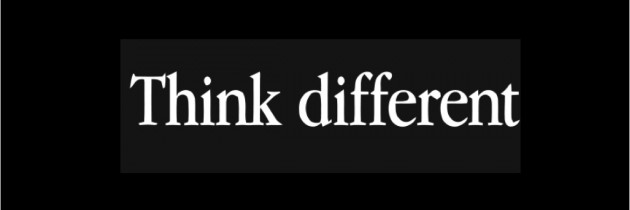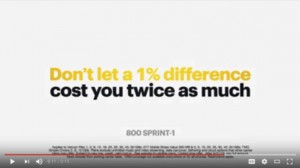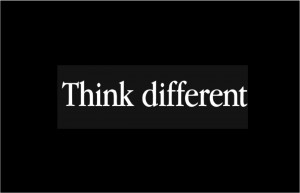Learning How To Think Different
It’s been 20 years since Apple launched its famous Think Different campaign. It marked the beginning of the company’s turnaround and ultimate rise to becoming the world’s most valuable company.
This campaign was created in response to the specific mandate of Steve Jobs, who had just returned as CEO. Jobs wanted something that reflected the philosophy of the company he co-founded. He needed to connect with the counter-culture image Apple had gained in its earlier years.
The TV commercial started with the words “Here’s to the crazy ones. The misfits. The rebels. The troublemakers…..” And ended with “Because the people who are crazy enough to think they can change the world, are the ones who do.”
The message was simple, clear, and relatable. It spoke to our need for meaning and purpose.
It was brilliant!
Strategic Thinking Behind the Campaign
While the execution of the Think Different campaign was extremely well done, a look at the thinking behind the thinking provides even greater insight into why this was such a success.
In a rare glimpse into powerful strategy development, there is a (poor quality) video of Steve Jobs outlining to employees and select media folks the thinking behind the Think Different campaign.
In this video, Jobs beautifully states:
“To me, marketing is about values. This is a very complicated world, it’s a very noisy world. And we’re not going to get the chance to get people to remember much about us. No company is. So we have to be really clear on what we want them to know about us.“
Here, Steve Jobs makes a clear case of how to cut through the noise and be memorable by deciding on the values that make you different – your differentiating values. Living these values should be the easy part as this should be a reflection of the existing organizational culture.
The problem is that few companies select differentiating values.
The Competitive Dilemma
Almost every company that goes through a values selection exercise ends up choosing the same values as every other company, including competitors. My values research of Fortune 500 companies revealed 17 Common Values, a group of values that customers, employees, investors, and suppliers assume every company possesses, to some degree.
But these are not differentiating values.
Consider, for example, the third most popular value of Excellence – which includes references to quality and performance. A company might claim to have the highest quality or best performance, but it’s only a matter of time before competitors catch up. Competing on Excellence – or any of the other 17 Common Values – is not a differentiator.
To create real competitive advantage, companies must compete on something uniquely different, such as:
- Anadarko Petroleum competing with servant leadership
- Danaher competing for shareholders
- Hormel Foods competing with their heritage
- Mattel competing on play
- SpartanNash competing with patriotism
- Volvo competing on safety
For those companies that don’t identify differentiating values, it’s not surprising to see them compete on price. That’s all they have left. But as any decent marketer can explain, competing on price is not sustainable. Price reductions are simply a race to the bottom.
A good example of this is the 2016 Sprint campaign.
The competition between U.S wireless carriers has always been fierce. But in June 2016, Sprint, the third largest carrier, made a bold claim: “Sprint’s reliability is now within 1% of Verizon and Sprint saves you 50% over Verizon, AT&T and T-Mobile’s rates.”
To really hit this point home, Sprint managed to engage the former Verizon “Test Man” to appear in numerous ads. This is the same guy that for many years appeared in Verizon ads, popularizing the saying “Can you hear me now?” The original purpose of Test man was to highlight Verizon’s network reliability. But now Sprint is claiming that network reliability across major carriers is virtually the same, with the real difference being price.
The problem with this approach is that competitors can easily lower their prices making the competitive field even again.
The Sustainable Solution
To create sustainable competitive advantage, there are three things we can learn and leverage from what Steve Jobs did at Apple in the late 1990s:
- Identify Values that are Unique to your organization. They describe the business in a way that competitors can’t say or do the same.
- Select Values that are Relevant to your key customers. They make a difference in a meaningful way for all your stakeholders.
- Determine Values that are Sustainable for years to come. They are something your organization can easily deliver in a consistent manner for the next 3 to 5 years, and ideally longer.
Bottom line: Learn from the pros, like Steve Jobs. Select values that make a difference, and acknowledge that you can’t differentiate with the 17 Common Values, or on price.
—————————–
Is there a company you admire that has identified differentiating values?










